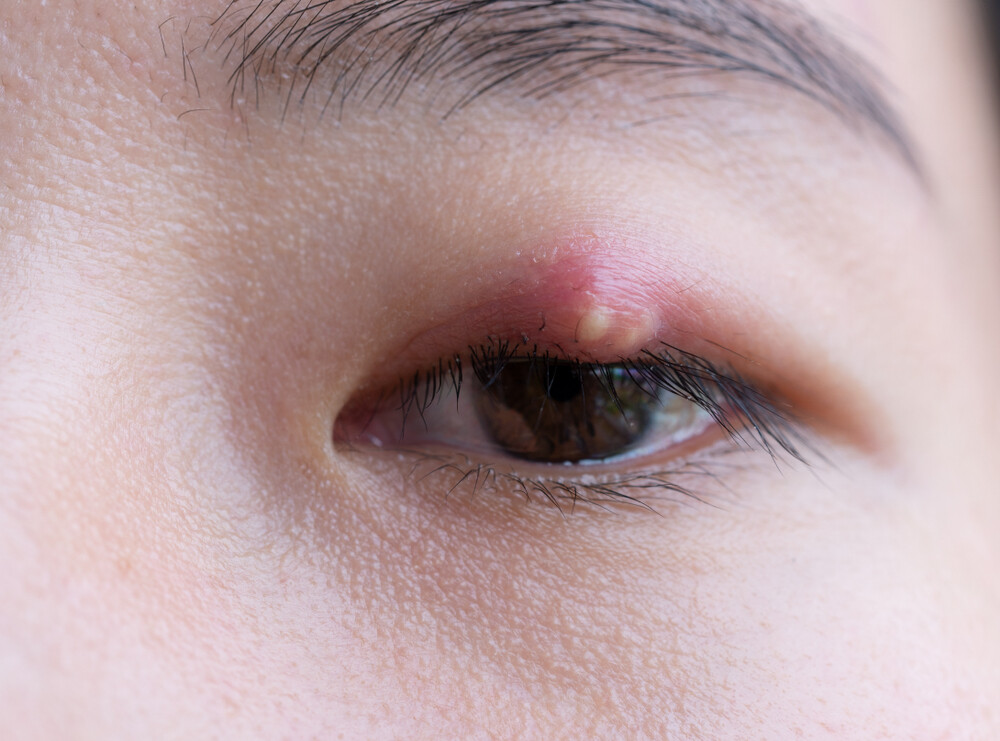A stye is not dangerous but extremely unpleasant. The stye (hordeolum) causes a hell of an itch and can cause considerable pain. We have gathered all the information about the troublemaker in the eye for you.
Stye: Nasty torment in the eye
Small but mean! A stye is tiny but can grow into a big plague. The little troublemaker on the eye requires patience above all else.
Symptoms of the infection
It usually begins with a swelling on the upper or lower eyelid. Then a small red lump develops, which can later fill with pus. This not only looks extremely unattractive, but also creates a feeling of tension that causes great pain. In addition, the hordeolum is accompanied by severe itching. All in all an infection that one would like to avoid.
Duration of the illness
Even if the skin abscess is painful, you normally do not need to worry. After a few days the lump usually bursts open and heals without permanent damage. All in all, you will usually not have to deal with a stye for more than nine days. But until then, you don’t have to wait until the stye crumbles on its own.
Treatment of styes
To support the recovery process as much as possible, you can fight the stye with dry heat. A red light lamp is particularly suitable for this. If you want to make sure that the bacteria do not spread throughout the eye, you can use eye drops or ointments containing antibiotics. Caution: Never use your fingers to squeeze out pus. This allows the bacteria to enter the blood vessels. You should also avoid damp heat, as the germs then feel particularly comfortable and spread as they please.
If, in addition to the infection, you suffer from swollen lymph nodes, fever and headaches, a doctor must be consulted urgently. If the pain is unbearable, the doctor can remove the hordeolum with a small operation. The stye is locally anaesthetized during the operation so that the patient does not suffer any pain. When the purulent fluid from the eye has completely disappeared, the discomfort should subside quickly.
Causes of the formation of styes
Three different glands are arranged in the eye: The minor and the pituitary glands are located at the edges of the eyelids. When these swell, it is an external stye that appears near the eyelashes. The meidom glands are located in the eye. If these swell, it is called an inner stye. This is hardly visible, but still very painful. Both types of styes are bacterial infections. Staphylococci are the most common cause of inflammation of the glands.
People with a weakened immune system are particularly susceptible to bacterial infections. The eyes can therefore also be attacked more quickly by germs and promote the formation of styes. Especially people suffering from diabetes mellitus are at increased risk of contracting hordeolum.
Preventing bacterial infestation
Staphylococci don’t stand a chance if you are careful not to rub your eyes with dirty hands. Since children in particular tend to rub their eyes with dirty fingers, they are particularly often affected. Parents should therefore make sure that their little ones wash their hands thoroughly after playing in the garden.
Even though the risk of infection from a stye is not as great as that from conjunctivitis, you should be careful not to use the same towel as the person with the disease. You should also wash your hands often if a member of the household has a stye infection. Watch out for contact lens wearers: Failure to clean your eyesight glasses thoroughly may encourage the growth of bacteria and thus promote the formation of a stye.
Is it stye or chalazion?
While a stye is a bacterial infection of the eye, bacteria are usually not the cause of inflammation in a hailstone. If the lump does not cause any pain, it is usually a hailstone (chalazion). This is a chronic disease of the sebaceous glands that usually lasts for several weeks. Really nasty and uncomfortable. Just like hail is.
If you are unsure whether it is a stye or a hailstone, it is better to have the skin abscess examined by a doctor. So the rule of thumb for styes is: be patient and calm. They usually disappear quickly. If there are complications, however, you should consult a doctor as soon as possible.

